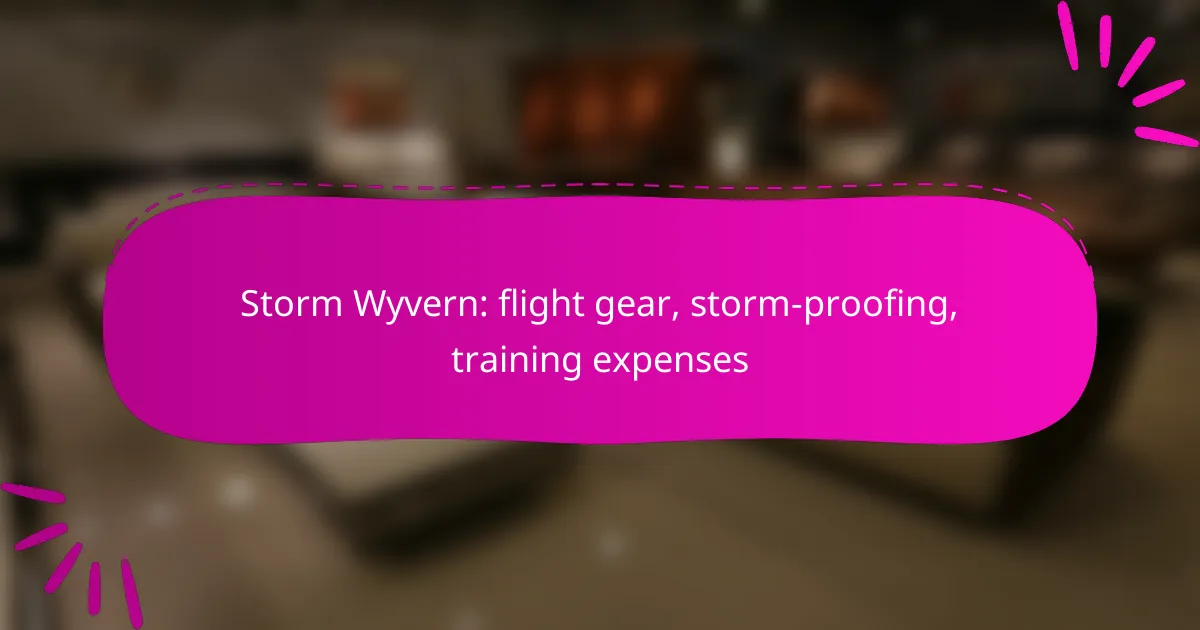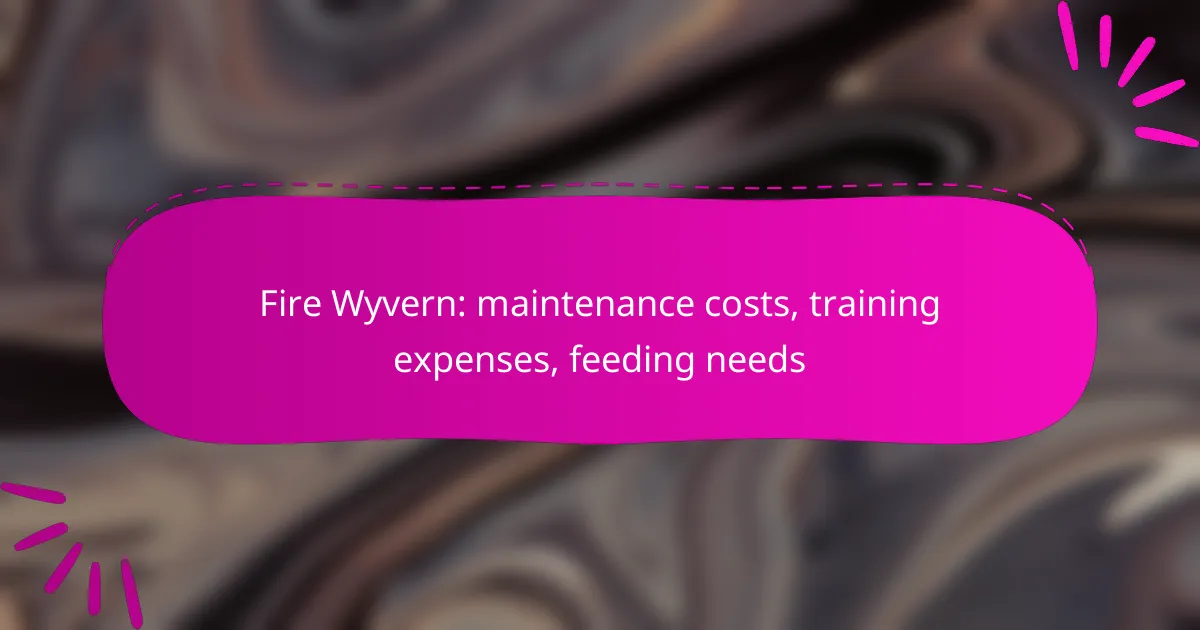Operating a Storm Wyvern requires specialized flight gear that can endure extreme weather conditions, ensuring safety and performance during high-altitude missions. Essential equipment includes storm-resistant wingsuits and weatherproof navigation tools, all designed to withstand the rigors of stormy environments. Additionally, prospective pilots should be prepared for varying training expenses, which encompass flight simulations, certification fees, and equipment rentals, all crucial for mastering the art of storm flying.
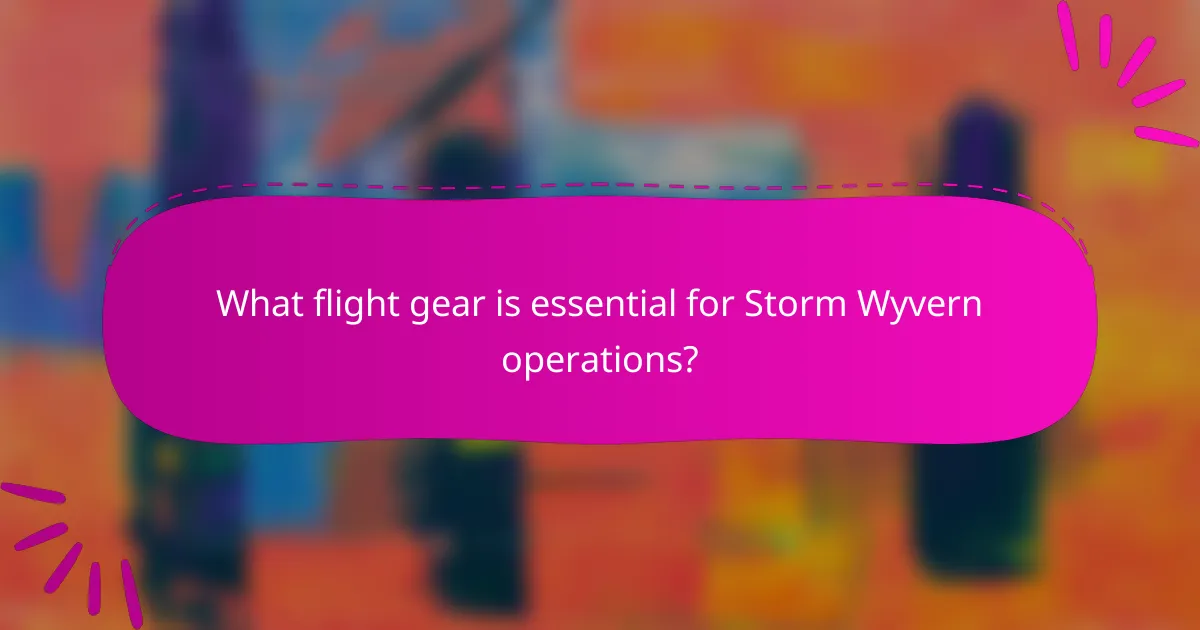
What flight gear is essential for Storm Wyvern operations?
Essential flight gear for Storm Wyvern operations includes specialized equipment designed to withstand extreme weather conditions and ensure safety during high-altitude flights. Key items such as storm-resistant wingsuits, high-altitude oxygen systems, and weatherproof navigation tools are crucial for successful missions.
Storm-resistant wingsuits
Storm-resistant wingsuits are designed to provide maximum protection against harsh weather elements while allowing for agile maneuverability. These suits typically feature reinforced seams and materials that resist water and wind, ensuring that pilots remain dry and insulated during turbulent conditions.
When selecting a wingsuit, consider the fabric’s weight and breathability, as well as the fit. A snug fit minimizes drag, while adequate insulation is necessary for colder temperatures at altitude. Look for suits that meet industry safety standards for storm conditions.
High-altitude oxygen systems
High-altitude oxygen systems are vital for maintaining adequate oxygen levels during flights above 10,000 feet. These systems typically include portable oxygen tanks and masks that ensure pilots can breathe comfortably in thin air.
When choosing an oxygen system, evaluate the tank’s capacity and the duration of use it provides. Systems that allow for adjustable flow rates can be beneficial for varying altitudes. Regular maintenance and checks for leaks are crucial to ensure reliability during operations.
Weatherproof navigation tools
Weatherproof navigation tools are essential for accurate route planning and real-time tracking in stormy conditions. These tools often include GPS devices and compasses that are designed to function in adverse weather without losing signal or accuracy.
Opt for navigation tools with waterproof ratings and durable casing. Features like touchscreen usability and voice commands can enhance functionality during flight. Regular updates to software and maps are also important for ensuring navigational accuracy.
Durable harness systems
Durable harness systems are critical for securing pilots safely within their wingsuits. These harnesses should be made from high-strength materials that can withstand the forces experienced during turbulent flights.
When selecting a harness, look for adjustable straps and quick-release mechanisms for ease of use. Ensure that the harness complies with safety regulations and is compatible with the wingsuit being used. Regular inspections for wear and tear can prevent accidents.
Emergency flotation devices
Emergency flotation devices are essential for pilots operating over water or in areas prone to sudden landings. These devices typically include inflatable vests or life rafts that provide buoyancy in case of an emergency.
Choose flotation devices that are lightweight and easy to deploy. Ensure they meet local safety regulations and are equipped with reflective materials for visibility. Regular training on how to use these devices effectively can enhance safety during operations.
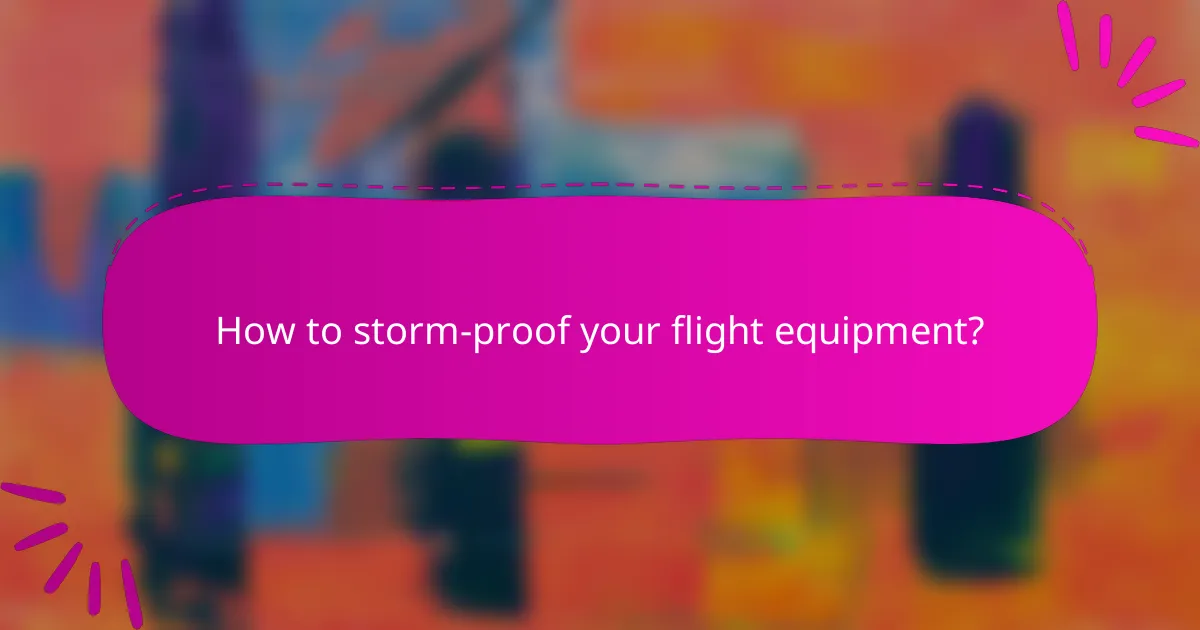
How to storm-proof your flight equipment?
To storm-proof your flight equipment, focus on enhancing its resistance to water, shock, and wind. Implementing specific materials and design features can significantly improve the durability and performance of your gear in adverse weather conditions.
Water-repellent coatings
Applying water-repellent coatings is essential for protecting your flight gear from moisture. These coatings create a barrier that prevents water from penetrating the fabric, keeping your equipment dry and functional. Look for coatings that meet industry standards for durability and effectiveness.
Common options include fluoropolymer-based treatments and silicone-based sprays, which can be reapplied as needed. Regular maintenance of these coatings can extend their lifespan and ensure optimal performance during storms.
Shock-absorbing materials
Incorporating shock-absorbing materials into your flight gear can help mitigate the impact of turbulence and sudden movements. Materials such as EVA foam or gel inserts can effectively absorb shocks, reducing the risk of damage to both the equipment and the user.
When selecting shock-absorbing materials, consider their weight and bulkiness, as these factors can affect overall flight performance. Aim for lightweight options that provide adequate protection without compromising mobility.
Wind-resistant design features
Design features that enhance wind resistance are crucial for maintaining stability during flight. Look for gear with aerodynamic shapes, reinforced seams, and adjustable closures to minimize wind resistance and improve overall performance.
Additionally, consider using materials that offer a combination of flexibility and strength, such as ripstop nylon or high-denier polyester. These materials can withstand strong winds while allowing for a full range of motion, making them ideal for stormy conditions.
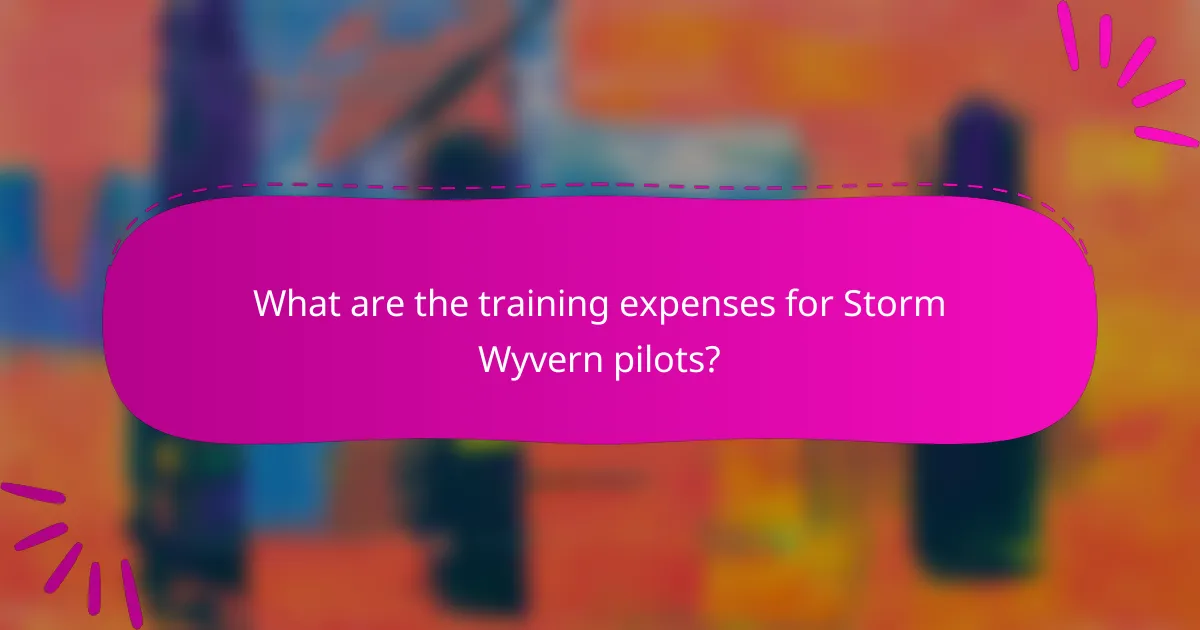
What are the training expenses for Storm Wyvern pilots?
The training expenses for Storm Wyvern pilots can vary significantly based on several factors, including location and training duration. Generally, aspiring pilots should budget for flight simulation costs, certification fees, equipment rental charges, and insurance premiums.
Flight simulation costs
Flight simulation costs are a crucial part of training for Storm Wyvern pilots. These simulations help pilots practice maneuvers and emergency procedures in a controlled environment. Depending on the complexity of the simulator and the duration of use, costs can range from a few hundred to several thousand dollars.
Many training programs offer packages that include multiple simulation sessions, which can provide better value. It’s advisable to compare different training centers to find the best options that fit your budget and needs.
Certification fees
Certification fees are necessary for obtaining the required licenses to operate a Storm Wyvern. These fees typically cover the cost of examinations and administrative processing. Expect to pay anywhere from a few hundred to over a thousand dollars, depending on the specific certifications required.
Be aware that some training institutions may bundle these fees with their overall training costs, so it’s essential to clarify what is included in any quoted price.
Equipment rental charges
Equipment rental charges can add to the overall expenses for Storm Wyvern pilot training. This includes costs for renting the aircraft and any necessary gear, such as flight suits and headsets. Rental prices can vary widely based on the aircraft model and rental duration, often ranging from hundreds to thousands of dollars.
Consider whether purchasing equipment outright might be more cost-effective in the long run, especially if you plan to fly frequently after training.
Insurance premiums
Insurance premiums are an essential expense for Storm Wyvern pilots, as they protect against potential liabilities during training and operations. The cost of insurance can vary based on factors such as the pilot’s experience, the aircraft type, and coverage limits, typically ranging from a few hundred to several thousand dollars annually.
It’s advisable to shop around for insurance providers and compare policies to ensure you get the best coverage for your needs at a reasonable price.

What prerequisites are needed for Storm Wyvern training?
To begin Storm Wyvern training, candidates must meet specific prerequisites that include basic flight experience, physical fitness, and a solid understanding of meteorology. These requirements ensure that trainees are well-prepared for the unique challenges of flying in storm conditions.
Basic flight experience
Having basic flight experience is crucial for anyone looking to train for Storm Wyvern operations. Candidates should have logged a minimum number of flight hours, typically in the range of 50 to 100 hours, to ensure they are comfortable with aircraft controls and navigation.
Prior experience with various aircraft types, especially those designed for adverse weather conditions, can be beneficial. This foundational knowledge allows trainees to focus on advanced storm-flying techniques without being overwhelmed by basic flying skills.
Physical fitness requirements
Physical fitness is a key component of Storm Wyvern training, as the demands of flying in storms can be intense. Candidates should undergo a fitness assessment that evaluates their endurance, strength, and agility, with a focus on activities like running, swimming, and strength training.
Maintaining a healthy body mass index (BMI) and cardiovascular fitness is essential. Regular exercise routines that include both aerobic and strength-building activities can help candidates meet these physical requirements and prepare for the rigors of storm flying.
Knowledge of meteorology
A strong understanding of meteorology is vital for effective Storm Wyvern training. Trainees should be familiar with weather patterns, storm systems, and how to interpret meteorological data to make informed flying decisions.
Courses in meteorology or related fields can provide the necessary theoretical background. Practical experience, such as tracking storms and understanding their behavior, will enhance a trainee’s ability to navigate safely through challenging weather conditions.
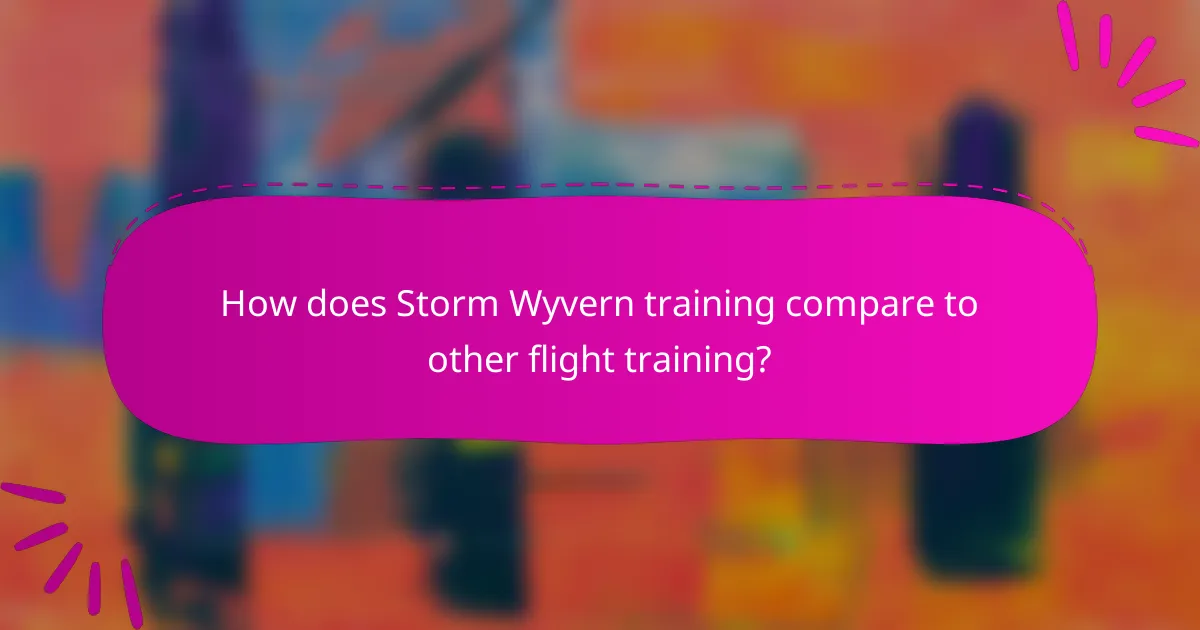
How does Storm Wyvern training compare to other flight training?
Storm Wyvern training is generally more specialized and intensive compared to standard flight training programs. It focuses on unique skills required for handling extreme weather conditions and requires additional investment in both time and resources.
Cost differences
The cost of Storm Wyvern training can be significantly higher than traditional flight training due to specialized equipment and expert instructors. While standard flight training may range from a few thousand to tens of thousands of USD, Storm Wyvern programs can exceed these figures, often reaching into the high tens of thousands depending on the duration and complexity of the training.
Additionally, participants may need to invest in specific storm-proofing gear, which can add several hundred to thousands of USD to the overall cost. It’s essential to budget for these extra expenses when considering Storm Wyvern training.
Duration of training programs
Storm Wyvern training programs typically last longer than standard flight training programs. While basic flight training can be completed in a few weeks to months, Storm Wyvern training often spans several months, with some programs extending up to a year to ensure comprehensive skill development.
The extended duration allows for in-depth training on handling severe weather scenarios, emergency procedures, and advanced navigation techniques. This thorough approach is crucial for ensuring safety and proficiency in challenging conditions.
Skill level expectations
Participants in Storm Wyvern training are expected to have a higher baseline skill level than those entering standard flight training. This program often requires prior flight experience or completion of basic flight training before enrollment.
As a result, trainees must demonstrate strong foundational skills in piloting and navigation. The advanced nature of the training means that individuals will also be expected to develop quick decision-making abilities and adaptability to rapidly changing weather conditions.






